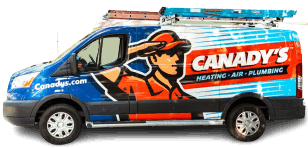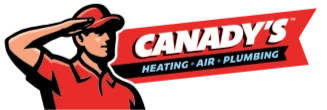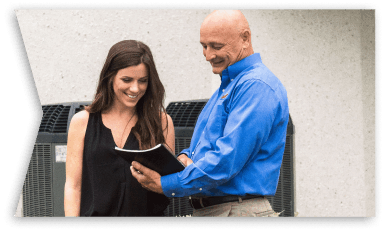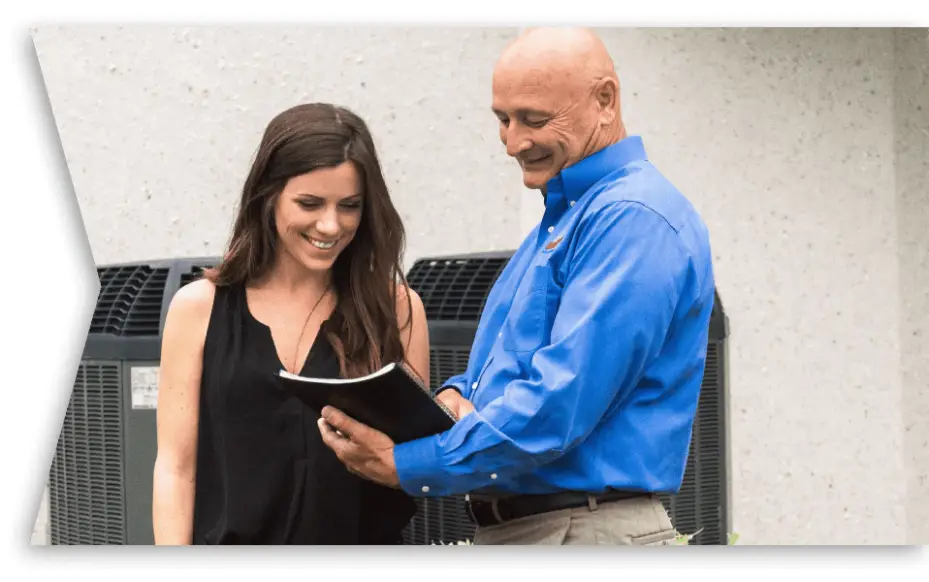Proudly Serving the Coastal Empire & the Lowcountry
Clogged drains, bad smells, or slow sinks? These could mean trouble deep in your pipes. Instead of guessing where the issue is or digging up your yard, Canady’s Heating, Air & Plumbing uses video camera inspections to find the problem fast, without the mess.
Our high-resolution cameras reveal clogs, tree roots, or cracked pipes, allowing us to quickly recommend the best fix.
Don’t let hidden drain problems turn into pricey repairs. Contact Canady’s today to schedule a video camera inspection in Savannah, GA, or Beaufort, SC.
What is a Drain Camera Inspection?
A drain camera inspection lets us see inside your pipes without digging or guessing. We use a waterproof camera on a flexible cable to check for clogs, cracks, roots, and other damage.
The live video feed shows what’s wrong so we can find the best repair solution with minimal disruption to your home.

Common Issues Detected by Sewer Camera Inspections
A drain camera inspection helps us find and fix hidden plumbing problems quickly. Here are some common issues we see:
- Clogs and blockages: Grease, hair, and debris can build up in pipes, causing slow drains or backups. We use drain snaking or hydro jetting to clear them out.
- Cracked or collapsed pipes: Old or shifting pipes can crack or break, leading to leaks and drainage problems. In these cases, sewer line repair or replacement is needed.
- Tree root intrusion: Roots grow into small pipe cracks, blocking the water flow. We use hydro jetting to remove them safely.
- Misaligned or sagging pipes: Pipes that shift or sag can cause standing water and slow drainage. If the problem is severe, sewer line replacement may be the best fix.
Benefits of Drain Camera Inspections
A drain camera inspection is the fastest and most reliable way to find plumbing problems without unnecessary damage or repairs. Here’s how it benefits you:
- Accurate diagnosis: We get a clear view inside your pipes to find clogs, cracks, and other issues right away.
- Cost-effective: By pinpointing the exact problem, we avoid unnecessary digging and repairs, saving you money on labor and materials.
- Time savings: Our cameras find the problem quickly, so we can get to work immediately.
- Preventative maintenance: We can catch small issues early before they become expensive repairs or major plumbing failures.
The Sewer Inspection Process
Our drain camera inspection is a quick and hassle-free way to find plumbing problems without unnecessary digging. Here’s what to expect:
- Initial consultation: We discuss your plumbing issues and schedule an inspection at a convenient time.
- Performing the inspection: Our technicians insert a high-resolution camera into your drain or sewer line to view blockages, cracks, or other issues.
- Reviewing findings: We show you the video footage, explain what we found, and answer any questions about the condition of your pipes.
- Recommended solutions: Based on the inspection results, we provide a detailed plan for repair or maintenance to restore your plumbing system.
Why Choose Us?
When it comes to resolving drain and sewer problems, experience matters. Canady’s Heating, Air & Plumbing has served homeowners for over 35 years, providing trusted plumbing solutions with upfront pricing and no surprises.
Our licensed and insured plumbers use the latest camera inspection technology to diagnose issues quickly and accurately.
Don’t wait for a small drain issue to turn into a big problem. Contact Canady’s to schedule a sewer camera inspection in Savannah, GA, or Beaufort, SC.
Frequently Asked Questions
When should I consider a drain camera inspection?
If you have frequent clogs, slow drains, bad smells, or suspect a sewer issue, a camera inspection can find the problem before it gets worse.
Is the inspection process disruptive?
No, we insert a small camera into the drain without any digging or damage.
How long does a typical inspection take?
Most inspections take 30 minutes to an hour, depending on the issue.
Can a camera inspection detect all types of pipe problems?
It can find clogs, cracks, and pipe damage, but it may not detect hidden leaks without visible damage. Additional testing may be needed.




